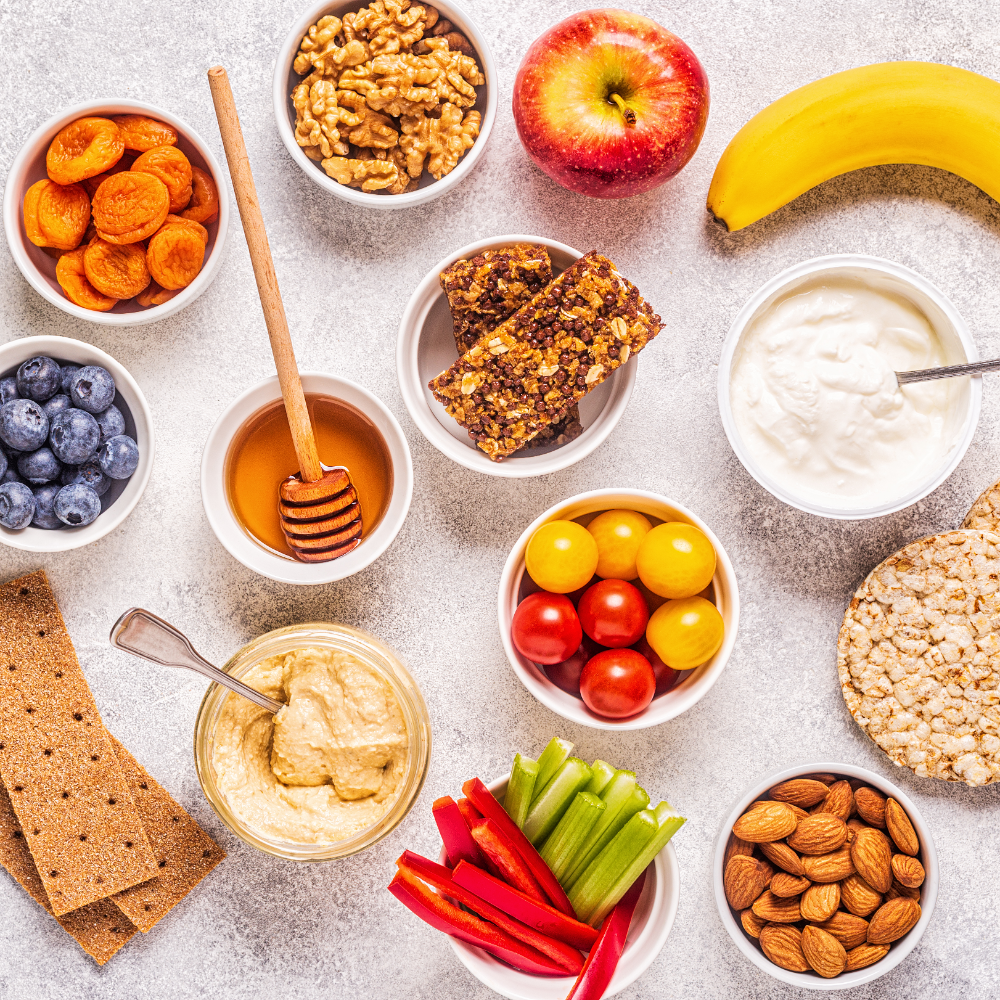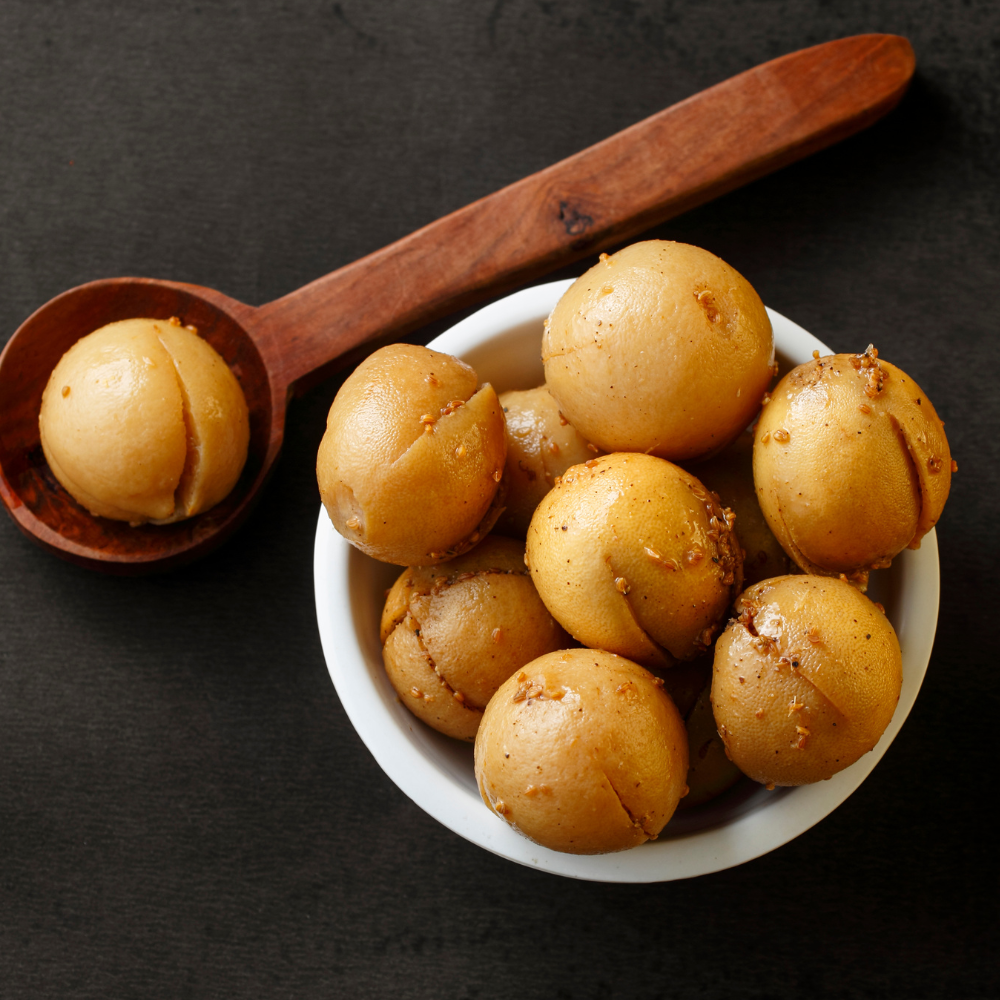Picture this: you delicately lower a crispy cracker or fragrant papad into a pool of aam ka achar, lemon pickle, or chilli achar, and then, with eager anticipation, take that first glorious bite. The tangy explosion of flavour whirls on your taste buds like a dance of sweet and sour notes, a symphony of taste that seems to echo through generations.
Remember how excited we got when we visited our grandmother’s house during the summers? It meant delicious food, lots of fun, and being carefree.
Our mothers and grandmothers used to store the delectable aam ka achar in those traditional ceramic white jars, barnis, brimming with mouth-watering flavours. The excitement of assisting them in the kitchen, all in anticipation of secretly savouring those tangy, fermented mangoes, still makes our mouths water.
The process, from handpicking the finest ingredients to skillfully measuring herbs and spices, was an enjoyable experience filled with shared laughter and precious memories.
Since long ago, our mothers and grandmothers have prepared a variety of pickles, like tangy aam (mango) and spicy kul (Indian berry) and amra, using age-old family recipes. You can relive this nostalgia with our Spicy Mango Pickle, Raw Mango Pickle, and Indian Hog Plum Pickle. After meticulously mixing the ingredients, they would spread the pickle jars on the sun-drenched roofs to let them bask in the warmth and dry naturally.
In the world of pickles, it's not merely about preserving vegetables; it's about time-honoured traditions, cherished memories, and the very essence of vibrant, fresh flavours that awaken your palate.
Pickles are more than just condiments; they are the embodiment of culinary magic. They are a taste of nostalgia that lingers on your taste buds, inviting you to savour every moment.
Have you ever wondered how to make pickles or started your own tradition for that hit of nostalgia? As you delve into this blog, you'll discover the secrets behind the pickling process and its time-honoured tradition.
Welcome to a world of pickling, where every bite is a taste of tradition and nature's finest. Get ready to tantalise your taste buds!
|
Table of Contents
|
What is Pickling?

Pickling is a process that involves preserving fruits or vegetables in a mixture of salt, sugar, and various spices. Oftentimes, vinegar or brine solutions are used for this fermentation process.
Pickling started as a technique to preserve the shelf life of perishable foods. That's why you can find pickles made from a variety of fruits and vegetables.
During the pickling process, the ingredients undergo fermentation and other changes that enhance the taste and nutritional profile of the pickle.
Pickling has a rich history, with origins dating back to 2030 BC in the Tigris Valley, where people preserved native Indian cucumbers. The term 'pickle’ comes from the Dutch word 'pekel,' signifying saline or brine.
Renowned traveller and writer Ibn Battuta mentions the pickling process in his written works- the biography of Muhammad Bin Tughlaq.
The Lingapurana from 1594 CE lists over 50 types of Indian pickles. Pickles are also mentioned in the 17th-century Śivatattvaratnākara encyclopaedia by King Basavaraja. Apart from its historical context, pickling hits close to home for us.
In India, the word 'achar' is common, originating from Persian roots and referring to various foods preserved in salt and oil. Pickles are an integral part of our cuisine, with all states having their own pickled delicacy to enjoy.
Let’s understand how pickling works.
Ingredients and Equipment Required For Pickling
When embarking on your pickling journey, it's essential to have the right ingredients and equipment at your fingertips. Let's dive into key elements that will ensure your pickling process is organic.
Ingredients
- Fresh Produce: The heart of pickling lies in the quality of your produce. Whether it's cucumbers, mangoes, lemons, chillies, garlic ,peppers, or other vegetables, opt for fresh and firm ones. Organic produce contributes to a healthier pickle while supporting sustainable farming practices.
- Spices and Herbs: Aromatic spices and herbs like dill, garlic, mustard seeds, and peppercorns are essential for infusing flavour into your pickles. Experiment with spice assortments to create unique taste profiles.
- Salt: High-quality salt is a critical component in pickling. It not only seasons your pickles but also helps to draw out excess moisture, ensuring a crisp texture.
- Vinegar: Vinegar is a fundamental ingredient in the pickling process. It provides the necessary acidity to preserve pickles and adds a distinctive tang to their flavour.
Equipment
This pickling process results in fresh and organic pickles like Imli Pickle and Lemon Pickle. This process and its ingredients are accessible to beginners. Now let’s look at some of the common pickling methods.
Types of Pickling Methods
1. Salt-Brined Pickling

The salt-brined pickling method is perfect for pickling vegetables and other produce that have a high water content. After "salting" this product, you will learn how to preserve pickles using canning jars. It helps to draw out the water content of the produce. It makes it easy for pickling liquid to soak deeper into your produce. You get better flavour, shelf life, and texture.
- After dousing pickles in salt-brine water, the next step of this pickling process is to drain them.
- Post-draining, it is time to thoroughly rinse your produce.
- After rinsing and draining, prepare your fresh produce and any desired spices.
- Then carefully pack them into sterilised canning jars.
- Next, fill the jars with a vinegar-based pickling brine, ensuring that your produce is completely submerged.
-
Finally, seal those jars using the water bath canning method to preserve your delectable pickles for the long haul.
2.Vinegar-Based Pickling or Quick Pickling

Quick pickling is one of the easiest and fastest methods to harvest pickles. You start by immersing food in a vinegar-based solution. Do this for a few hours, or let it soak overnight. This pickling process is good as it makes the produce ready to eat with foods like eggs, vegetables, and more.
The beloved side dish ‘sirka vala pyaaz’ basically means onions in vinegar and are made using this method. They are often used as a side dish served along with curries, daals and naans.
Some tips for the vinegar method :
- Use white distilled or cider vinegar for its 5% acidity. White vinegar is better when the colour is light.
-
Do not dilute the vinegar. If you do not like too much sourness in your pickles, then add sugar to balance out the vinegar. A basic mixture of water, salt, and vinegar creates a brine that you can use in this pickling process for food. You can also use home canning techniques, such as the water bath canning method. The key differentiation lies in the fact that foods pickled in a vinegar brine are really fermented.
They are also called "fresh pickles". It is a basic method to turn your fresh produce into spicy and tangy pickles.
3.Fermentation

While traditional methods are good, sometimes you might have to resort to scientific ones like fermentation. In fermentation, natural bacteria break down sugars into lactic acid. It can take several days. However, the results give you the sour, tangy flavour that you crave in pickles.
- In this pickling process, when you use foods with a high water content, you can simply salt them to draw out their brine. Naturally fermented pickles are rich in healthy probiotics and other beneficial live bacteria.
- For fully fermented pickles, store them in their original container for approximately four to six months.
- Make sure to refrigerate them and consistently remove any surface scum and moulds.
- Clarify your pickle brine by filtering it through paper coffee filters during the pickle-making process to get a clearer solution.
- Once the making part is finished, it is equally important to store the pickles appropriately so that they don’t go rancid.
4.Traditional Indian Method of Pickling

You must have fond memories of achaar or pickles being made in and around your home. Mangoes, lemons, chillies, carrots, cauliflower, turnips - there is no vegetable that can’t be pickled.
Here’s the common process to make those tangy yummy spicy pickles at home :
- Take your choice of vegetable, chop it into small pieces, and let them dry under the sun so that no moisture is left.
- Meanwhile, roast and prepare the spice blend as per the recipe. You’ll find spices including mustard seeds, fenugreek seeds, chilli powder, black pepper, turmeric, and salt to be present often in the recipes.
- Take a bowl and add the oil as per the requirement. Mustard oil is usually used for this method but recipes vary from state to state.
- Mix the raw cut vegetables with the spice marinade and the oil in the bowl.
- Store in a barni or glass jar and let it sit under the sun for 5-6 days. Your pickle will be ready to eat then.
To try out some special pickle making recipes, read How to Make Mango Pickles? (Traditional Recipes)- Complete Guide 2023.
How to Make Lemon Pickle ? - All You Need To Know !
Now, let’s discuss how to preserve pickles so that they last a long time.
How To Store Your Pickles Safely?
Storage for food remains an issue, especially during weather changes. High humidity, sudden monsoon showers, and dampness can adversely affect your favourite pickles and their taste. So, here are a few tips to help you preserve your favourite achar!
Use Proper Jars

Glass jars are ideal, especially during this season, for storing pickles. Unlike plastic bags or containers, which can lead to spoilage, glass containers help extend shelf life. Pickles in tightly sealed glass jars remain unaffected by moisture in the air, even when exposed to sunlight.
You can also store it in a barni -Indian pickle jar. Traditionally, Indians have always stored pickles in barni. These jars are both lead and cadmium-free, ensuring they are completely safe for use with your food. Additionally, they are stain-resistant and do not stain like many plastic bowls tend to do.
Cool, Cure and Store
After cooling at room temperature on a towel or rack, ensure proper sealing by pressing the lid centre (it shouldn't pop up).
For optimal flavour, store sealed jars in a cool, dark spot for a few weeks to allow pickles to mature. Shelf life varies but generally ranges from several months to a year, depending on the pickle type and ingredients.
Combination of Oil and Salt
While preparing homemade pickles, some tend to limit the amount of oil. However, during the monsoon season, it becomes essential to increase the quantities of salt and oil. The combination of salt and oil functions as a natural preservative, safeguarding pickles from spoilage.
FAQ
How do organic pickles differ from store-bought pickles?
Organic pickles have no synthetic additives or preservatives. They are a healthier choice as they have fresh, locally sourced ingredients.
Are organic pickles better for my health?
Yes, organic pickles can be a healthier choice. They are typically made without synthetic pesticides and fertilisers, and they avoid genetically modified organisms (GMOs). Organic pickles also tend to have a cleaner ingredient list. They come in aluminium containers that reduce exposure to unwanted chemicals.
Where can you store your pickle?
Store pickles in your refrigerator or in a cool dark place. It keeps the pickles fresh for a long time.
Why can you not store pickles in metal containers?
The acid in your pickles can react with metal containers of iron, copper, and others. It can lead to formation of health-hazardous compounds. That’s why you should avoid storing pickles in metal containers.
Can you store pickles in plastic containers?
One can store pickles in plastic containers if no other container is available. Though it is better to store pickles in glass jars. It does not react with the chemicals in the pickle. Also, it does not easily corrode.
Conclusion
In the world of pickling, you get to indulge in a taste of tradition and nature’s finest and most fresh flavours. From organic ingredients to a pickling process, enjoy this journey of culinary magic! Savour the tangy symphony of preserved, unforgettable flavours.
And if you’d like to enjoy the flavour without the hassle, check out the premium and organic selection of pickles from Two Brothers.
Read more :
5 Healthy And Easy Snacks Ideas For Kids 2023
5 Amazing Health Benefits of Pickles











